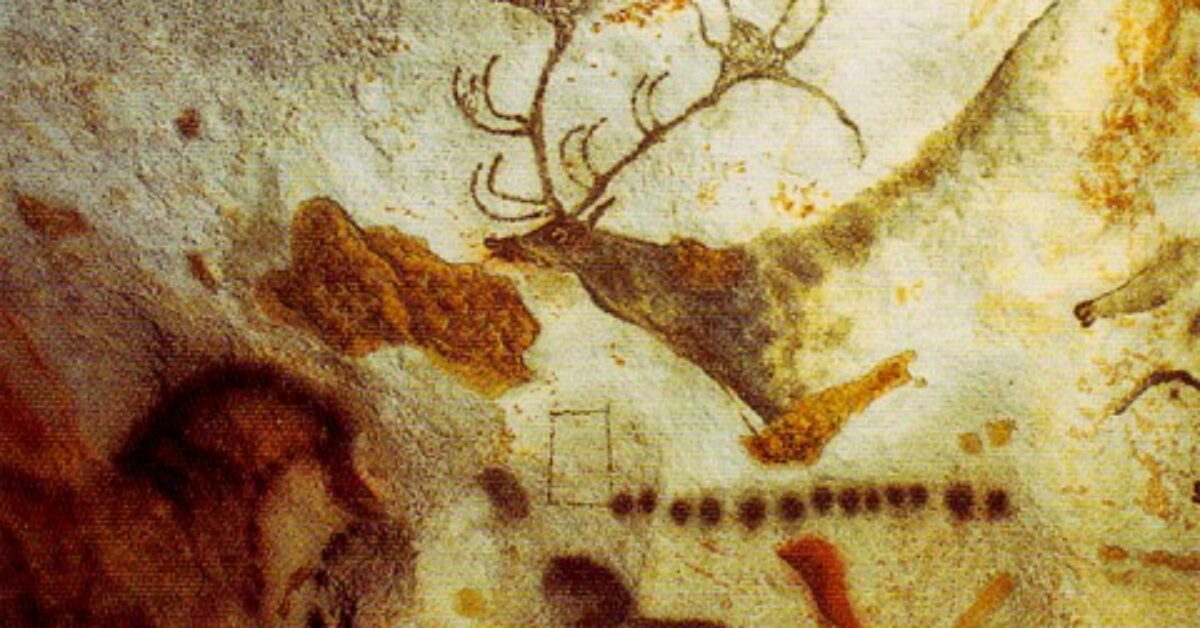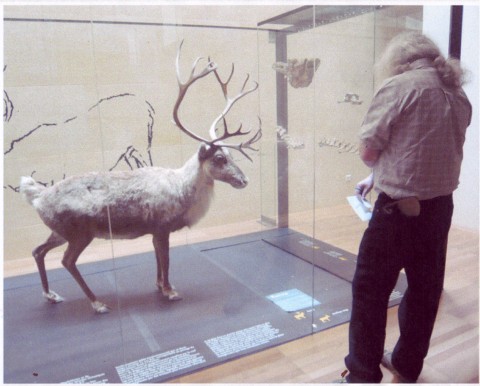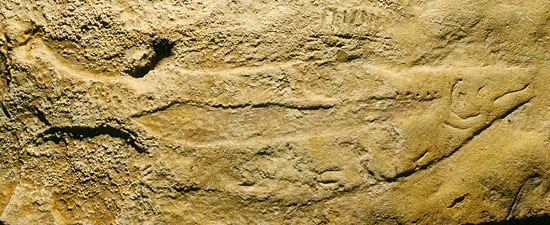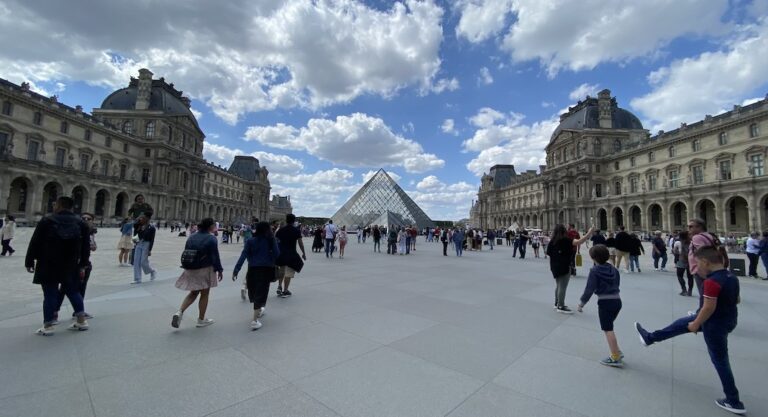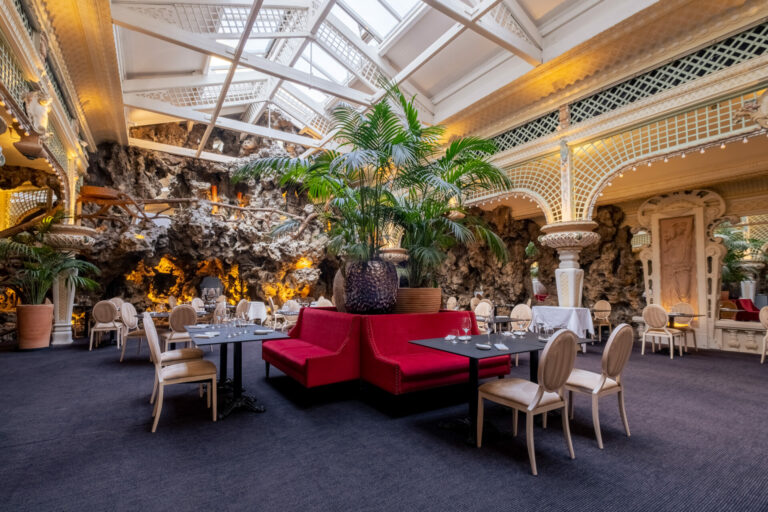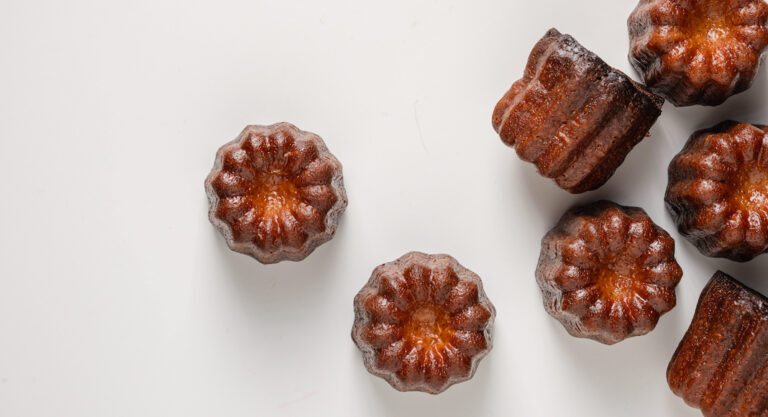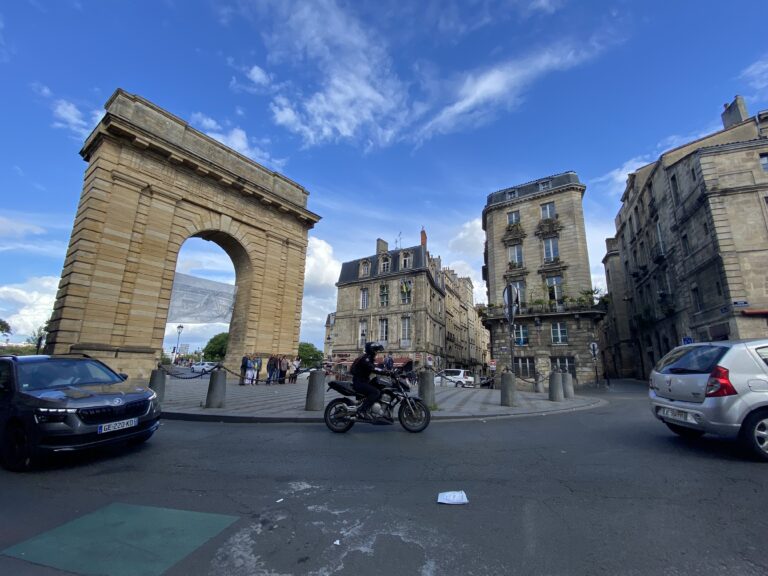To the caves! We had always wanted to see cave art. We had seen pictures in books, but they had always seemed flat and lifeless. We wanted to see the art in place, inside stone, inside the mountains, in the wet darkness. We wanted to wind our way through rock to walk into the light of those lives, those animals on the walls.
In France, the Dordogne’s Vezere River Valley, in Bordeaux, seemed to be the place to go. A 12-mile stretch of the river, winding between limestone hills from Montignac down, is home to nearly 150 archaeological sites, with more than 25 decorated caves discovered to date. The famous Lascaux Caves are up a hill just outside of Montignac, and 10 miles downriver is the town of Les Eyzies de Tayac.
Les Eyzies is recognized as a world center of prehistory. It is home to France’s National Museum of Prehistory, and has a number of cave sites within walking, bicycling, or kayaking distance. The river valley was a natural migratory route for birds, fish, and mammals, and the limestone hills are home to many caves and overhangs. This was a rich ground for early human hunters and gatherers. The finding of ancient skeletal remains in a nearby cliff overhang, called Cro-Magnon, lent its name to Cro-Magnon Man. The earliest burials of modern humans (five skeletons) were found at this site in 1868. There is an on-site museum, and in Les Eyzies you can stay at the Hotel Le Cro-Magnon, built back into an overhanging cliff.
From Les Eyzies you can venture out and explore the surrounding hills.
Most of the painted caves are now closed to the public, to protect them from harm. Lascaux, the most famous networks of caves in the valley, has a replica of the caves and their art, which helps to give the viewer some sense of what it is like to be inside the caves, sharing the cavern with art from thousands of years ago. There is also a nearby wild animal park, Thot Park, with living descendants of the animals on the walls of the caves – deer, bison, wolves, aurochs, Przewalski’s horses, and even a mechanized wooly mammoth! Seeing the living animals gives you an even better sense of how skillful these early artists were in their representations of the animals around them.
A number of the caves in the valley are still open to visitation, although visits are strictly controlled. It is still possible to experience the darkness, and then the illumination, in the caves where these works of art have been sitting unseen for thousands of years. Many of the caves have resource sites on the internet, with visitation hours, tours by language, and samples of what you will see in the cave.
The caves contain few human figures, but they do contain a great and varied wealth of animals, intimately and precisely rendered on rock surfaces, including bison, horses, reindeer, bears, mammoths, lions, a rhinoceros in the Combarelle cave, and, in the Abri du Poisson, a life-size Atlantic Salmon, dating to approximately 23,000 BCE!
Each cave guide, of course, loves their cave the best, and will show you the particular treasures of their cave. In one cave, we were looking at a series of animals with straight lines painted on or near their bodies. Our guide told us that the French archaeologists felt that this was a hunting scene, with the lines depicting arrows and spears. To further explore the art, a group of Aboriginal people from Australia were brought into the caves to explain what they saw in the images. They said that no, those were not arrows, the lines represented the animals’ power, coming off them into the world!
Picasso visited the caves in 1940, and is said to have remarked, ”We have learned nothing in 12,000 years!”.
One cave quite close to Les Eyzies is Font du Gaume, which is a twenty minute walk from town. This is the last cave in France still open to the public which contains polychrome paintings, more than 200 images of mammoths, reindeer, cave bears, cave lions, and a panther…
Another nearby cave is the wonderful Combarelles. The art here is engraved, cut into the rock, and includes horses, reindeer, cave bears, cave lions, and mammoths. Our guide here said to us, “So many souls circulate here.”
In the Regourdou cave, just 800m from Lascaux, the bones of a Neanderthal were found mixed with brown bear bones. These bones have been called, “the most robust Neanderthal skeleton ever found.” We don’t know what was happening in these caves. Men and women were creating art, putting their visions, dreams, memories, images onto the walls of the caves, far from the outside world, far from the light.
We did take a couple of side trips. One was to the nearby medieval walled town of Sarlat-la-Canéda, which we visited on market day. It was a great pleasure to walk a town where the streets are named for writers.. As the owners of two donkeys ourselves, we were quite interested in the donkey dairy shop there, featuring donkey milk, donkey cheese, and a number of donkey milk based soaps and body lotions. The owner of the shop assured us that Cleopatra bathed in donkey milk to keep her skin healthy and vibrant!
The second side trip was to see the horses of Pech Merle. The Pech Merle cave is located just east of Cahors, near a town called Cabrerets, on the Cele River. You can walk to the cave from the center of town ( we stayed in a hotel with porches and a dining area hanging out over the river!). This cave is famous for its beautiful horses, as well as mammoths, human handprints, and even the footprints of a child in what was once mud, ½ mile below the surface of the earth. The paintings and engravings here date from 25000 BC to 15000 BC. When light comes on in the cave, and you see those horses, you enter a timeless world of wonder and beauty.
The American poet Clayton Eshleman, who visited the caves a number of times, asked “Where do the extinct species go? Into us?” These animals have gone into the rock, out of time, staying hidden for thousands of years. Our every visit to them threatens them, literally. Caves are closed to visitation to protect the art and the animals live on – deep within the rock, and deep within us. We follow our hearts and go: To the caves!
Gary Lawless is co-owner of Gulf of Maine Bookstore in Brunswick, Maine, and the publisher of Blackberry Books. His most recent book is How the Stones Came to Venice from Littoral Books (Portland, Maine) He and his wife Beth live in Nobleboro, Maine, with their cat and two rescue donkeys.
An earlier version of this article was published in Italian in Zest Lettura in January of 2022.
All photos courtesy of Beth Leonard.

